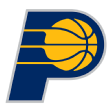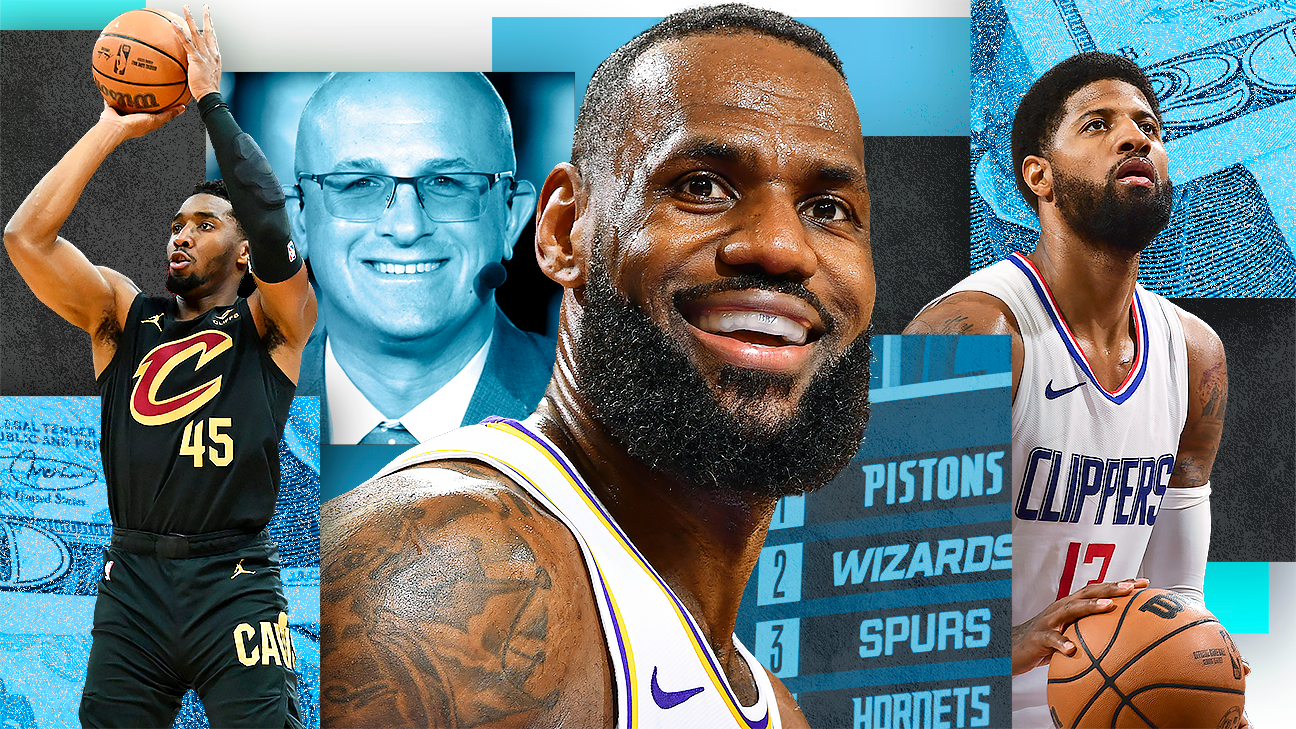ESPN
With the end of the 2023-24 NBA regular season, we’re turning our attention to how each team should approach the offseason, including through the draft and free agency.
The Atlanta Hawks, 36-46 this season for a 10th-place finish in the Eastern Conference, rocketed up the lottery board to grab the No. 1 pick in this year’s NBA draft.
While the 2024 NBA playoffs continue to narrow to an eventual champion, we’re breaking down the potential moves for each eliminated franchise, including a look at the state of each roster, finances, priorities for each front office, extension candidates to watch, team needs and future draft assets.
Key: ETO = Early Termination Option | P = Player Option | R = Restricted | T = Team Option
Jump to a team:
ATL | BOS | BKN | CHA | CHI | CLE
DAL | DEN | DET | GS | HOU | IND
LAC | LAL | MEM | MIA | MIL | MIN
NO | NY | OKC | ORL | PHI | PHX
POR | SAC | SA | TOR | UTAH | WSH


2023-24 record: 56-26
Draft picks in June: No. 27 (own) and No. 37 (via MEM)
Free agents: , Jordan McLaughlin, Monte Morris, T.J. Warren, Luka Garza (R) and Daishen Nix
State of the roster: Do not let the embarrassing Game 5 loss to Dallas change the narrative on this season. There is a strong foundation to build on considering Minnesota won 56 games (the second most in franchise history) and reached the conference finals for the first time since 2004. The Timberwolves return the same starting five, NBA Sixth Man of the Year Naz Reid and key reserve Nickeil Alexander-Walker. All-NBA and future MVP candidate Anthony Edwards is set to begin Year 1 of a five-year contract and is not a free agent until 2029. The same goes for 23-year-old Jaden McDaniels, who is on a five-year deal, while All-Star Karl-Anthony Towns and NBA Defensive Player of the Year Rudy Gobert have four years and two years left on their contracts, respectively.
The top-five roster that president of basketball operations Tim Connelly inherited and then added to is overshadowed by the biggest question in franchise history: Which ownership group will be in charge when next season starts? Will it be current owner Glen Taylor or minority owners Marc Lore and Alex Rodriguez? The two sides are headed to arbitration over a disagreement in ownership control.
The resolution could play a significant role in how Connelly conducts business moving forward.
The Timberwolves are projected to exceed $200 million in salary, the largest in franchise history and are expected to pay the luxury tax for only the second time since 2007-08. The penalty is expected to exceed $75 million. They are one of three teams (Denver and Phoenix are the others) to have three players on max contracts. Minnesota is also in the second apron and restricted in how it can address the roster outside of retaining its own free agents and two draft picks. The cost, however, justifies the product on the court considering Minnesota ranked first in defensive efficiency and its starting five were a plus-9.5 points per 100 possessions this season. The Timberwolves return 10 players from this year’s roster, including seven who are 26 years old or younger. Even in the scenario in which Minnesota wanted to make a roster change, trading the $221 million owed to Towns for example is extremely difficult under the current CBA. His $49.4 million salary next season is one of the largest in the NBA and would trigger the first apron hard cap for teams looking to acquire the forward. Towns was benched for the last nine minutes in the Game 2 loss to Dallas and shot 27.8% from the field in the first three games.
As one team executive told ESPN, “only dysfunctional ownership can break up this team.”
Offseason finances: The Timberwolves are operating as a team below both aprons but must take into consideration their 2024-25 finances if they make any trades. Minnesota currently is allowed to take back more money or send cash in a trade, and aggregate contracts sent out. However, using any of the three strategies starting prior to July 1 triggers the second apron restriction for next season. Because of the Towns, Edwards, McDaniels and Mike Conley extensions, Minnesota — starting on July 1 — is $6.7 million over the second apron. Despite a payroll of $205 million in 2025-26, Minnesota is expected to receive a financial boost. The luxury tax and apron levels are expected to increase by 10%, the maximum allowed, according to ESPN’s sources.
Top front-office priority: Minnesota can get away with playing an eight-man rotation in the playoffs, but will need to address its regular-season depth in the offseason. Not including Alexander-Walker and Reid, the Timberwolves’ reserves are Wendell Moore Jr., Leonard Miller and Josh Minott. The three former draft picks played a total of 219 minutes this season. Minnesota does have two draft picks in the top 40 and Bird rights on free agents Anderson, Morris and McLaughlin. The Timberwolves are allowed to exceed the luxury tax and apron to re-sign each but would pay a significant financial penalty if the contract is for more than the veteran minimum exception. Anderson had his minutes decrease in the postseason (from 22.6 to 14.2) and averaged only 3.8 points. He was productive, however, in the conference finals, averaging 20 minutes, 7.5 points and 3.5 assists.
Extension candidate to watch: The Timberwolves were active since last June, signing four players (Reid, Edwards, McDaniels and Conley) to extensions. The two players to focus on this offseason are Gobert and Morris. Gobert was named Defensive Player of the Year for the fourth time in his career. According to Second Spectrum, 21.6% of shots the Timberwolves defend are in the restricted area when Gobert is on the floor. That would be the lowest percentage faced in the NBA. The percentage jumped to 26.8% when Gobert was off the court, sixth highest in the NBA. Gobert has two years left on his contract and can become a free agent next offseason if he declines his player option. While it is unlikely Minnesota would sign him to a four-year, $243 million extension, Gobert could decline the $46.6 million player option and then extend for a lower salary but with more years attached. Morris is a free agent in July, but is eligible to extend for an additional two seasons until June 30. Minnesota acquired Morris with the goal of providing a playoff-tested bench presence. Morris played 12 minutes in the Game 5 loss to Denver but averaged only 8.7 minutes in the postseason.
Other extension candidates: McLaughlin (through June 30) and Minott (as of July 22)
Team needs: Backup point guard, wing depth and players who can create their own shot.
Future draft assets: The Timberwolves are allowed to trade their 2024 and 2031 firsts, starting the night of the draft. From the Gobert trade, Minnesota owes Utah a 2025 and 2027 unprotected first. It will also send a 2029 top-five protected first to Utah. The Jazz also have the right to swap firsts in 2026. Minnesota has three second-round picks available.

2023-24 record: 47-35
Draft picks in June: No. 36 (via TOR), No. 49 (via CLE) and No. 50 (via NOP)
Free agents: Indiana Pacers and Pascal Siakam no longer is on the roster. Anunoby and Siakam were replaced with Immanuel Quickley, Tyrese Haliburton. Instead of the All-Star Haliburton to build around, the Raptors have a franchise player in . Barnes, Quickley, Barrett, , Anthony Davis, Shai Gilgeous-Alexander and Victor Wembanyama.
Other extension candidates: Trent (through June 30) and Boucher.
Team needs: Point guard depth and bench scoring on the perimeter. The Raptors could go with a combination of Liberty-Freeman and Brown (if his option is exercised) behind Quickley. Liberty-Freeman started four games in March, averaging 12.5 points. The Raptors ranked 28th in 3-point percentage from their reserves.
Future draft assets: If Toronto does send its 2024 first to San Antonio, the Raptors would then be allowed to trade their 2025 first starting on the night of the draft. If the first is retained, the next allowable year is 2027. The first owed to San Antonio is top-6 protected in 2025 and 2026. Toronto is owed a future first-round pick from Indiana (top-4 protected in 2026 and 2027). The Raptors also have four second-round picks available.
. (R), Shai Gilgeous-Alexander on the Wizards’ roster. Instead the selling point is patience and a partnership. The patience comes with the realization that the current roster will turn over multiple times before there is stability. The Wizards finished in the bottom three in defensive efficiency and have 12 players under contract. The partnership is a multiyear plan of creating winning habits and identity on the court. The new head coach and front office will have a decision to make with Jones. The veteran had career highs in points (12.0), assists (7.3), field goal percentage (48.9%) and 3-point shooting (41.4%). Jones averaged 1.0 turnover or less for the ninth consecutive season, but he missed the last month of the season with a back injury.
Extension candidate to watch: Expect Washington to take an aggressive approach in extension talks with , who averaged a career-high 13.4 points and played in 70 or more games for the third consecutive season. His 459 3-pointers are the most in a player’s first three NBA seasons in Wizards history. Per Cleaning the Glass, Kispert ranked in the 89th percentile among all forwards in points per shot attempt and effective field goal percentage. Kispert shot 76.0% in the restricted area and ranked 10th among players with at least 150 attempts.
Other extension candidates: Bagley, Shamet (as of Oct. 1) and Holmes
Team needs: Besides hiring the next head coach and finding NBA-level starters at every position except power forward, a jump in development for Coulibaly. The 19-year old averaged 8.4 points in 63 games this season. He started 15 games but shot only 26.6% on 3-pointers in those games.
Future draft assets: Give Winger credit for rebuilding the pool of draft assets. Since he took over last May, Washington has acquired two first-round picks, four years of picks swaps in the first round from Phoenix and 11 second-round picks. The first from Golden State in 2030 is top-20 protected. Washington still owes New York a first-round pick that is top-10 protected in 2025 and top-8 protected in 2026. If it hasn’t conveyed by then, Washington will send the Knicks its own 2026 and 2027 second-round picks. The earliest that Washington can trade its own first is in 2028.


